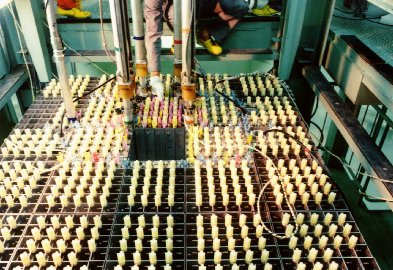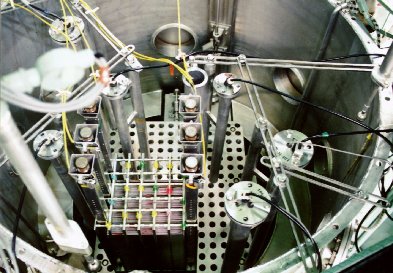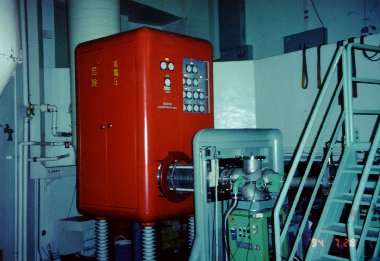Kyoto University Critical Assembly
The KUCA is a multi-core type critical assembly established in 1974 as a facility for the joint use study in reactor physics for researchers of all universities in Japan. It has three independent cores, namely, two solid moderated cores (A, B cores) and one light water-moderated core (C core). A pulsed-neutron generator is also installed, which can be used in combination with the A-core.
In the KUCA, basic studies on reactor physics and reactor engineering have been performed. Recent research topics includes 1) nuclear characteristics of thorium fueled reactor, 2) nuclear transmutation studies on transuranic elements, 3) critical experiments on highly-enriched uranium cores with various spectrum indices, 4) subcriticality measurements using various techniques, 5) nuclear characteristics of coupled core systems, with special interest to the eigenvalue separation which is an index of reactor stability, 6) development of innovative techniques for the neutron measurement and their application to reactor physics experiments, and 7) simulation experiments of the accelerator driven system (ADS) using combination of subcritical cores and the neutron generator, FFAG 100 MeV proton accelerator.
For education, the reactor laboratory course on reactor physics and radiation measurement is offered every summer for 12 Japanese universities since 1975. Approximately 100 to 150 students majoring in nuclear engineering are joining this course every year. The subjects offered in the experimental course include 1) critical mass measurements, 2) control rod worth calibration, 3) measurement of neutron flux distribution, and 4) reactor operation and fuel handling for educational purpose. The same reactor laboratory course for Korean undergraduate students was started in 2003, that for Swedish students in 2006 and that for Chinese students in 2011.
Solid Moderated Cores

Solid Moderated Cores- The A and B cores are solid moderated cores, which use enriched uranium fuel and moderator plates (polyethylene or graphite) of coupon type to form the core. These material plates are stacked in an aluminum sheath to form the fuel element. Fuel elements are vertically arranged on the grid plate to constitute the core. Various neutron spectra can be realized by varying the combination of fuel and moderator plates in the fuel elements. Experimental material plates such as natural uranium and thorium metal are also usable.
Light Water Moderated Core

Light Water Moderated Core- The C core is a light water moderated core of a tank type. A fuel element is assembled by inserting enriched uranium fuel plates with Al cladding between the side plates of the fuel element. Fuel elements are arranged on the grid plate inside the core tank and are immersed with light water that acts as moderator and reflector. Fuel plates can be arranged inside the fuel element with three different fuel pitches in order to vary neutron spectra in the core. The grid plate can be separated into two parts in order to enable coupled core experiments.
Pulsed-Neutron Generator

Pulsed-Neutron Generator- The pulsed neutron generator is designed to enable its use in combination with the critical assembly. Deuteron ion beam accelerated by the 300 keV Cockcroft-Walton type accelerator is led to a tritium target for generating 14MeV (D, T) neutrons. Thus generated neutrons could be used for basic studies on nuclear fusion systems. These neutrons could be also injected into the critical assembly for various pulsed neutron experiments of thermal fission systems and for basic experiments to study nuclear characteristics of the accelerator driven system (ADS).
Another pulsed neutron generation facility is equipped at A-core which can produce up to 100MeV neutrons using the FFAG proton accelerator, and the first experiments in the world for the basic ADS research have been started in 2009.




